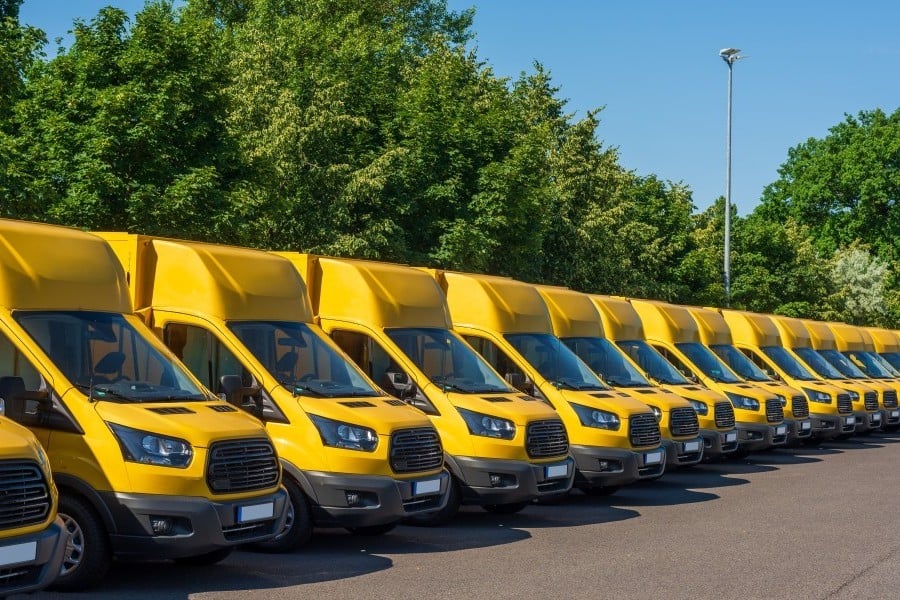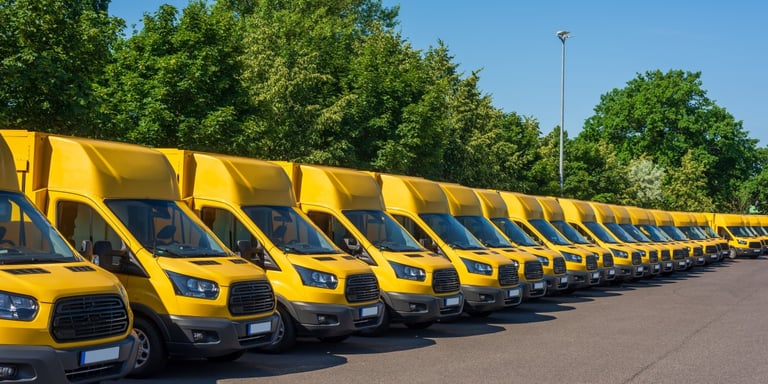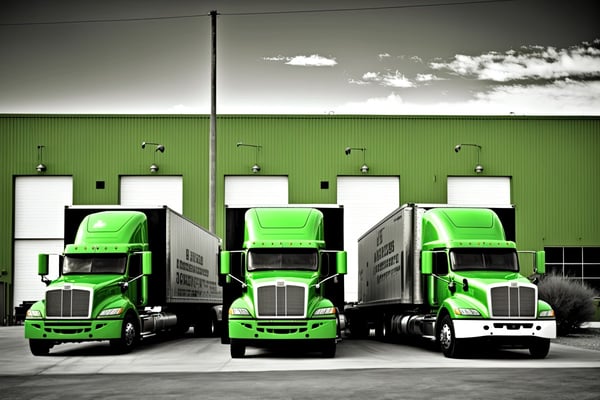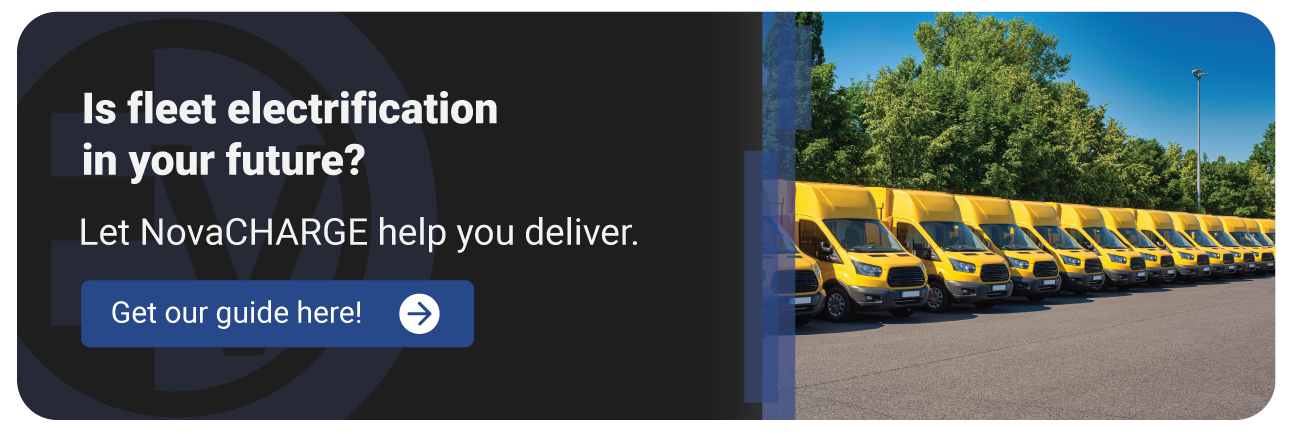Top Benefits of Switching to an EV Fleet
May 08, 2023 | 7 MIN READ

There was a time, just over a decade ago, when discussions about electric vehicles were limited to small circles. While most people expect that sales were initially targeted at consumers, the truth is that municipal and business fleets were, initially, seen as one of the best applications of electric vehicle technology. When one considers the benefits of fleet electrification, it’s easy to see why fleets were an initial target for electric vehicle adoption. From cost savings to improvements in efficiency, fleets continue to be one of the best ways to leverage EV technology.
Quick Links
Who Is Using an EV Fleet (and Who Can!)
More and more the news includes stories about everyone from corporations (like Frito Lay) to municipalities (like NYC) making or accelerating the shift to EV fleets. In fact, many major corporations that provide goods and services and rely on their own fleets are making the transition.
From retail companies like Amazon, Best Buy, Clif Bar, Ikea, and Verizon to delivery organizations like FedEx and the USPS, the switch makes good business sense. In many cases, EV fleets are simply replacing older fleet vehicles, but with incentives, many businesses are seeing more reasons to make the transition (we’ll get to that in a minute).
It’s not just big business though. Everyone seems to be getting in on the battery-powered action. Big cities, like Los Angeles, New York, and Detroit, have large fleets (NYC’s municipal fleet boasts approximately 30,000 vehicles), but it’s also smaller cities like Columbus, OH that are making the move and taking the future into their own hands.
And, whether your EV fleet is in the tens of thousands or the tens, electric vehicle fleets are perfect for small businesses too. One of the greatest advantages of fleet electrification is that the benefits are scalable.
EV Fleet Adoption
Early adopters of electric vehicle fleets likely encountered some trial and error, but thankfully, their pioneering enabled those just considering and beginning fleet electrification programs to learn.
And, as adoption is increasing, let’s take a look at a few of the most important decisions:
1. Understand what your fleet does and where it goes. Logistics is a key component of fleet management, whether using gas-powered or electric vehicles. Start with an analysis of GPS data, which can help you understand how far your fleet travels and how much time vehicles are “at rest.” For some fleets, that means only factoring in travel between destination and depot. For other EV fleets where vehicles may travel home with drivers, time between charges is an essential factor. For EV fleets, these two details are vital and can inform everything from the number of vehicles you’ll need to route management.
2. Choose vehicles wisely. This concept is two-fold. First, you want to consider which vehicles in your fleet you can replace without significantly impacting their role or function. More specifically, consider replacing the vehicles that run short routes with breaks at their depot first. Perhaps your plan involves replacing vehicles with lower mileage first (you can then shift some of those to longer routes while your EVs handle the others). Then, as with EV charging stations, not all electric vehicles are created the same. The make and model you choose should have qualities and characteristics that match the operation needs of your fleet. You’ll also want to consider cost, environmental factors, any regulatory requirements, and whether or not there will be any auxiliary power loads for cooling/heating or operation of equipment like lifts or cranes.3. Understand the cost, available incentives, and ROI. For a lot of businesses, fleet electrification seems far too expensive a transition, almost prohibitive, especially when one factors in the cost of vehicles and EV charging stations. However, working with the right partners and leveraging government grants, rebates, and incentives, most businesses can decrease the costs and make sustainability goals possible.
Additionally, the initial costs are offset by the cost savings connected to EV fleet management. Traditional fleets require a significant amount of maintenance and repair, not to mention the fluctuating costs of gas. It’s just one of the benefits!
4. Investigate existing charging infrastructure. For any EV driver, fleet or not, finding reliable EV charging stations can be a challenge. As a fleet manager, creating your own infrastructure and installing EV charging stations is essential. However, knowing where there is existing infrastructure on your routes is invaluable. Should a driver be caught in an emergency situation, you both will want, and need, to know where a quick charge can get them through.
While infrastructure is just beginning to grow and improve now, estimates are that, by 2030, there will be 1.3 million EV chargers at workplaces, 900,000 public Level 2, and 180,000 DC fast chargers in the U.S.
5. Include your drivers in your decisions. Few things can dampen the excitement and energy behind a new campaign like a team that is disengaged. Educating your team on the values, benefits, and workings of electric vehicles and the infrastructure can get them excited about the shift. With government goals seeking to have half of fleets electric by 2030, EV fleets are the future, and getting your team on board early will benefit your business and your drivers.
 Top Benefits of Fleet Electrification
Top Benefits of Fleet Electrification
For many businesses and organizations, fleet electrification conversations revolve around EV fleet challenges rather than the benefits. In fact, typically cost comes up before anything and it’s deemed prohibitive, but a deeper dive, and greater understanding, often reveals that the cost of waiting to electrify your fleet may be more impactful. In fact, cost savings is among one of the great benefits of fleet electrification, but let’s take a closer look at the benefits.
1. Cost Savings
One of the biggest benefits of fleet electrification is the cost savings. Between fuel, maintenance, and vehicle replacement, operating and managing a traditional fleet of combustion engine vehicles is quite expensive, particularly if your vehicles are aging. In contrast, EVs require less regular maintenance, electricity prices are far more stable (and often cheaper) than the fossil fuel market, and the cost of EVs is rapidly decreasing.
2. Same SafetyWhen some people think of EVs, they think of Zip cars, or cars that are somehow less safe or less reliable than vehicles with a combustion engine. EVs must meet vehicle safety standards set forth by the National Highway Transportation Safety Administration (NHTSA) which also sets standards for battery safety. In short, EVs are subject to the same safety testing as traditional vehicles and are as safe as any other vehicle on the road.
3. Better Performance and More EfficientLet’s face it, traditional vehicles with their combustion engines were not designed for stop and go traffic. They simply do not perform well. And, when it comes to businesses and organizations, like cities, whose vehicles, like delivery trucks and buses, make frequent stops, EVs perform better. That kind of efficiency is less wear and tear on a vehicle’s components as well as their being designed for that kind of travel.
Further, their mechanical design means they are more efficient at accelerating and have great torque so any concerns about moving large loads, like say in a municipal vehicle, are unwarranted.
The U.S., along with many other countries, in an effort to mitigate climate change and reduce carbon emissions, has set sustainability goals, including a transition to electric vehicles. By 2030, the U.S. aims to have 50% of vehicle sales be electric. And, to meet those goals, businesses will, similarly, need to adopt environmental goals, including switching to EV fleets.
Thankfully, many businesses have their own sustainability goals, including reducing CO2 emissions, especially in cities, where idling gas engines and stop and go driving contribute to pollution. One great way to do that is through fleet electrification.
5. Public Image and Perception
More and more consumers are choosing brands that share their values and concerns. More specifically, it means spending money in places and cities that are concerned about climate change. 2 years ago, research suggested that nearly 65% of consumers were concerned about extreme weather and, over the last 2 years, those concerns have grown. That same research revealed that a quarter of consumers were willing to switch to a brand that shared their environmental concerns.
Imagine being able to improve efficiency, reduce costs, meet your goals, and capture market share with one decision? Fleet electrification can do that for your business. NovaCHARGE has the solutions you need and we’ve designed our charging stations as well as our charging network with your needs in mind.
Whether you’re first starting to explore the options and just want to discuss how a fleet electrification project would look for your business or organization, or if you’re already in the market for a solution, then talk with our experts today.
